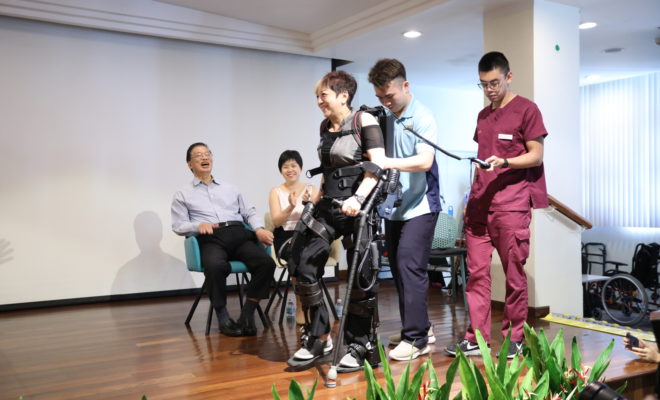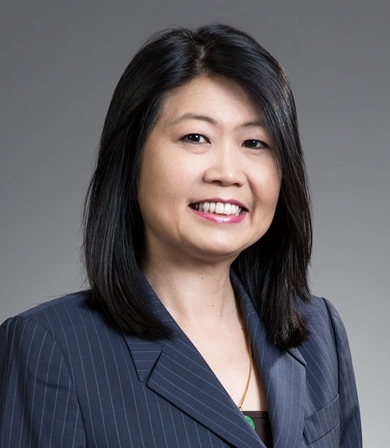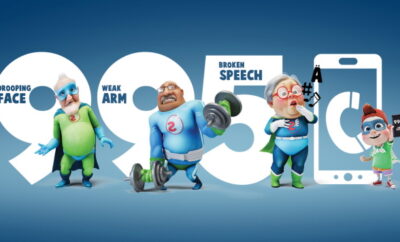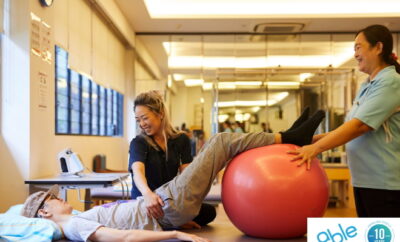
Health x Wellness
Robotic technology transforms the rehabilitation landscape
Ekso Bionics® is a developer of exoskeleton solutions that support, enhance strength, endurance and mobility in humans across medical and industrial applications.
The company was founded in 2005 and recently launched their flagship healthcare product, the EksoGT™. This is a wearable robotic exoskeleton suit used by patients with stroke and spinal cord injuries in rehabilitation.
In Singapore, it is deployed in Alexandra Hospital, NTUC Health, St Luke’s Eldercare Centre, St Luke’s Hospital and Stroke Support Station.

We spoke with Ms. Lim Chwee Foon, CEO, Asia Pacific of Ekso Bionics about their technology when applied to rehabilitation and their near-term position on robotics.
Active Age (AA): Can you set the context on how stroke and spinal cord injury patients currently go through therapy and rehabilitation?
Ms. Lim Chwee Foon (LCF): Traditional therapy is highly labour intensive and dependent very much on physiotherapists physically supporting and manipulating the patients. Due to the physical limitation of the stroke or spinal cord injury, it is often challenging to mobilise patients early in their recovery phase, leading to missing opportunity in these ‘critical window’’. For more complicated cases, two to three physiotherapists might be needed.
Studies have shown that the most effective way to regain the ability to walk is to practice walking. With traditional therapy, it is often challenging to achieve sufficient number of steps or the training intensity patients need, leading to sub-optimal recovery. Compensatory movements are common, reinforced with repetition.
For those discharged from the hospital, lack of compliance to continued rehabilitation can be a real issue. In the study (by Chen et al) published in the Annals Academy of Medicine Singapore in 2014, [it was] demonstrated that overall longitudinal rehabilitation attendance rate fell from 100% as inpatients to 20.3% at 3 months and less than 10% at 6 months. Once patients are discharged from hospital, they essentially do not continue with the needed rehabilitation, due to access, motivation, and even financial challenges.
Robotic technology, such as EksoGT ™, is shifting the paradigm and transforming the landscape of rehabilitation. Ekso’s business is about wrapping [an] intelligent robot around a human body and augmenting for strength and endurance. The EksoGT ™ is a wearable robotic exoskeleton for rehabilitation that helps patients with stroke and spinal cord injury stand and relearn to walk.
The patient wears the Ekso suit during training. The robot holds the patient upright, and provides powered assistance at the hip and knees. The EksoGT ™ has the ability to adapt its assistance dynamically to the patient in real time. It has an extensive range of programmes that can be tailored to each patient’s condition and recovery. The robot senses and responds to weight shifts and the patient’s walking pattern, providing assistance and also resistance to challenge the patient accordingly. The device provides immediate feedback to both the therapist and patient which allows for prompt adjustments to be made, leading to enhanced learning. This allows both patient and therapist to fully focus on the quality and intensity of training. Most patients take an average of 400 steps their first-time training in the device, which is hard to achieve with conventional therapy.
Our patented technology provides the ability to mobilise patients earlier, more frequently, and with a greater number of high intensity steps. The robot augments a patient’s strength and has the ability to customise support for each leg independently, which is particularly important for stroke patient who is often one-side affected.
Each year, as many as 500,000 individuals experience a spinal cord injury (SCI) and 15 million suffer a stroke. Our exoskeleton technology helps patient get back on their feet earlier to re-learn correct step patterns, weight shifting, and posture.
AA: Based on the panel, what is the population risk of stroke leading to disability and why is this important?
LCF: People worldwide are living longer. With age comes various complex, chronic conditions and mobility becomes a real challenge. By 2050, the world’s population aged 60 years and older is expected to number 2 billion, an increase from 900 million in 2015.
Studies have shown that stroke prevalence grows exponentially with age. For example, in China alone, there are 12 million stroke patients currently. The number is expected to more than double to 30 million by 2030. About 75% of the stroke patients have different degrees of disability, of which 40% are severely disabled. Mobility is often compromised in such cases.
Similarly, in Singapore, stroke is the leading cause of long-term disability and loss of mobility, especially amongst the elderly. Singapore faces an annual increase of some 7,000 new cases of stroke every year or 20 new strokes a day. More than 65% of stroke survivors have impaired ability to walk and 30% have long-term motor deficits.
Such an escalating rate of disabilities brings serious concerns around rising cost of long term care and pressing demand on Healthcare resources. Worse, it precludes many affected elderly from pursuing an active, purposeful and quality of life. In this context, our mission is to help people regain their confidence, independence and quality of life, by helping as many people regain their mobility (or at least part of) with our technology.
AA: Can you share more about Asia’s first clinical study of the use of EksoGT™ in Singapore?
LCF: The National University Health System (NUHS) in Singapore recently adopted three EksoGT ™ exoskeletons for a clinical study. NUHS is one of the first national health systems in Asia to study how advanced exoskeleton technology can improve mobility and rehabilitation outcomes, and the first to study its application across the entire continuum of care from hospital to community.
The Improving Mobility via Exoskeletons (iMOVE) program, supported by Temasek Foundation and Trailblazer Foundation Limited, will study patient outcomes and assess the viability and potential for scaling-up the use of robotic exoskeletons across the continuum of rehabilitation care from hospital to community.
The study will focus on patients suffering from stroke and spinal cord injuries, especially for the elderly. The three EksoGT ™ devices will be used at multiple NUHS partner sites including Alexandra Hospital, NTUC Health, St Luke’s Eldercare, St Luke’s Hospital, and Stroke Support Station.
The exoskeleton technology can be a critical game changer in rehabilitation. Through this programme, stakeholders hope to make technology-enabled rehabilitation more accessible and affordable to more seniors in the community.
We are delighted to be part of this programme that provides access to our Ekso technology by patients who need it, especially those requiring rehabilitation support. Our goal is [to] facilitate greater adoption of our technology, and help more people regain their independence and [enjoy a] better quality of life.
AA: How do you see the use of such tools in recovery and rehabilitation changing in the near term?
LCF: The EksoGT ™ offers many unique benefits to patients who are re-learning to walk after a stroke, as the device promotes early mobilisation and can help improve walking speed and distance, which are critical factors for optimal recovery.
Clinical evidence suggests that including EksoGT ™ gait training in inpatient rehabilitation for stroke improves patient walking speed and distance outside of the device at discharge compared to admission and improves independence in functional mobility.
There are also other medical benefits associated with walking and being upright such as [managing recovery] from neuropathic pain, bladder and bowel as well as cardiovascular challenges. Having access to such technology as EksoGT opens up ™ new possibilities for patients to regain their independence and quality of life.
As such, we expect that the adoption of Ekso GT ™ and similar technologies to accelerate over time. Growing awareness and technology adoption will lead to enhanced competencies in integrating robotics into clinical practice across all rehabilitation settings.
We believe there is an important role for robotics technology as the EksoGT ™ to support healthy and active aging.









